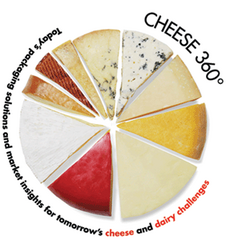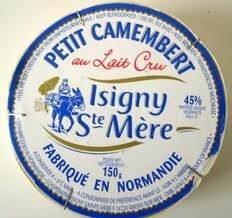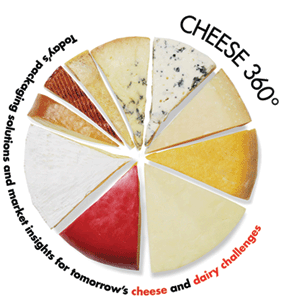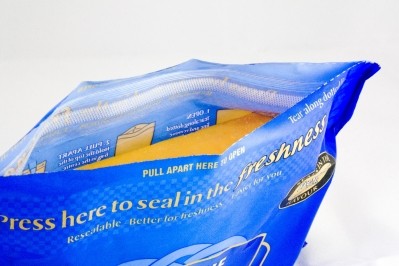Sealed Air slams rivals for 'market misinformation' over chlorine use in cheese packaging

Speaking at Sealed Air Cryovac's Packforum Cheese 360° event in Paris, Eugenio Longo, director SmartLife, Sustainability Solutions Consultancy Services, presented results from a new study showing that the environmental impact of the firm’s polyvinylidene chloride (PVDC) barrier bag was not greater than alternatives.
Longo told industry delegates: “A lot of our customers are concerned by the fact that our bags contain PVDC, because it is a polymer that contains chlorine, and a lot of supermarkets have banned chlorine-containing polymers such as PVC, and obviously have put our bags in that category.”
But Sealed Air’s new study showed that its barrier bags could not be considered like PVC, and that PVDC had a specific role in cheese packaging, Longo said.
Although he added that Sealed Air (2011 turnover: $7.906bn) also made EVOH-based barrier products, he said. “We wanted to show the sustainability benefits of continuing to use PVDC.
“PVDC offers a superior barrier that EVOH cannot offer, and obviously more cheese waste is the wrong thing to do from an environmental and cost perspective. So you really want the bag that provides a better barrier and a longer shelf life, to increase product profitability and cut waste levels.”
Tackling market ‘misinformation’
Application results compared Sealed Air’s barrier bag (NewGen3055 (PVDC) to OSB3000 (EVOH) and XG300 (nylon and EVOH) alternatives. “This shows that the fact that chlorine is in the product has no environmental impact. The PVDC will provide a longer shelf and, in some cases, less waste within your specific supply chain,” Longo said.
Longo said the study provided a factual basis for Sealed Air’s sustainability claims and “addressed misinformation that existed in the market”. He added that the firm’s sales and marketing teams were now taking the presentation and white paper to customers and retailers across Europe.
Moreover, the amount of chlorine in the NewGen bags (4.6%) was comparable to that found in common foods such as cheddar cheese via salt (4%) and bacon (7%), Longo explained.
Longo said: “The role of chlorine in our PVDC bags is to preserve the cheese by creating a barrier to oxygen, while the role of chlorine (via salt) in cheese is to preserve and provide a taste. This is why the impact of making these bags cannot be compared to making a PVC package.”
Undue focus on packaging waste
Moving beyond PVDC, Longo said a wider SmartLife life-cycle analysis (LCA) of cheese showed that the environmental impact of producing it was very high, but not so different from other products.
He said: “In such a product the most important thing to do is reduce waste – you want to deliver as much cheese as you want to your consumer, because that’s what’s going to have the highest impact.
“So life cycle thinking enables you to improve your material, energy and carbon efficiencies – that should reduce your waste levels. And in waste there’s a lot of value – products you don’t waste you sell, you’re making more money.”
Discussing the impact of waste, Longo glossed a slide showing the relative carbon footprint value (packaging versus product waste).
“If you consider that the carbon footprint of the packaging is 1%, then just by producing 2% of cheese waste, you actually have compensated for the carbon footprint of the packaging,” he said.
“A lot of people focus their impact upon packaging, and the environmental impact of packaging, but in reality if you develop a packaging that reduces your food waste by 2%, then you have paid for the impact of your packaging. So this is how serious the food waste problem is.”
He added: “The carbon footprint of making [1kg of] cheese is 52% higher than making the packaging, so this is where the focus should lie.”











